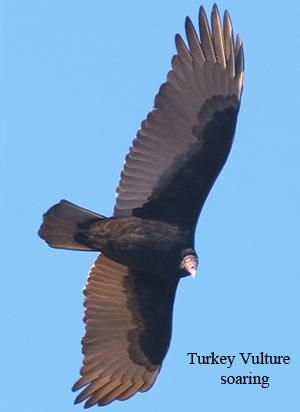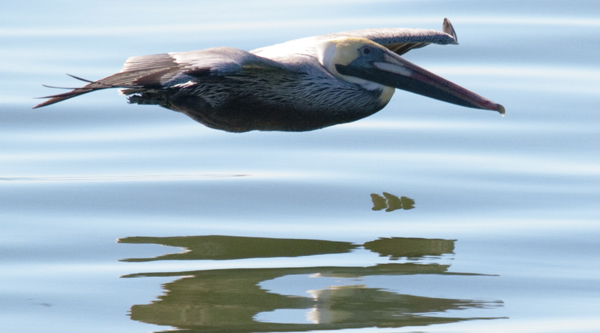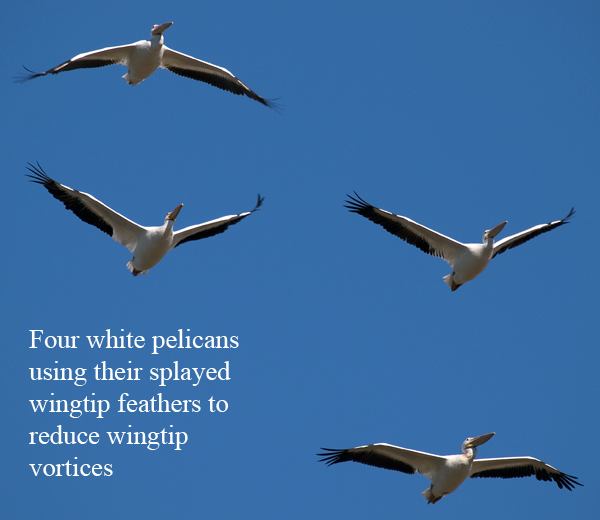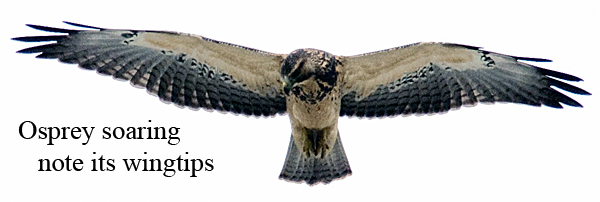Soaring Birds
Today, soaring birds. The University of Houston's College of Engineering presents this series about the machines that make our civilization run, and the people whose ingenuity created them.
I talked my mother out of a dollar in 1942. That was like fifteen of today's dollars, and we weren't wealthy. I used it to buy the kit for a seven-foot wingspan glider -- largest I'd ever built. I worked with great care and produced a magically light, balanced, and buoyant model. When I hand-launched it, it would skim the ground with gravity-defying grace.
I built another big glider, years later. This time I launched it from a tow line. It caught a thermal on its first flight and flew away, never to be found. That was my last big glider. Now I photograph large gliding birds. And I begin to understand the modes of bird flight that those gliders captured.
 My first big glider was called a Condor. Real life condors are the largest birds in the western hemisphere. They spread their nine-foot wings and soar 160 miles a day looking for carrion -- floating across the sky, now and then hitch-hiking on rising thermals. They're a lot like big turkey vultures with their frightening red faces. Both are scary, but they are the cleanup crews of the great outdoors. And both are lovely to watch in flight.
My first big glider was called a Condor. Real life condors are the largest birds in the western hemisphere. They spread their nine-foot wings and soar 160 miles a day looking for carrion -- floating across the sky, now and then hitch-hiking on rising thermals. They're a lot like big turkey vultures with their frightening red faces. Both are scary, but they are the cleanup crews of the great outdoors. And both are lovely to watch in flight.
So let's think about the aerodynamic wonders of soaring birds. Example: we've all seen airplane wingtip vortices made visible by condensing water droplets along their corkscrew trail. That vortex drags upon either an airplane or a soaring bird. It eats up energy.
We know that the airfoil -- the cross-section of a wing -- raises air pressure below and reduces it above. At the tip, the higher pressure air below the wing, trying to flow around onto the upper side, is spun back into a vortex, many miles in length.
 Airplane makers now add little vertical winglets to wingtips. As those thin vertical surfaces divert the air below upward, they greatly reduce the trailing vortex. But soaring birds have a better solution. They splay the feathers at their wingtips like fingers, with slots between them. Then the air below flows up between those slots, mixing with the air above. That disrupts and reduces the trailing vortex. A large bird coming in to land then closes those slots to increase both lift and drag.
Airplane makers now add little vertical winglets to wingtips. As those thin vertical surfaces divert the air below upward, they greatly reduce the trailing vortex. But soaring birds have a better solution. They splay the feathers at their wingtips like fingers, with slots between them. Then the air below flows up between those slots, mixing with the air above. That disrupts and reduces the trailing vortex. A large bird coming in to land then closes those slots to increase both lift and drag.
One more soaring bird trick: Think about how, as our jet liner lands, it seems to buoy just above the concrete for a moment before the wheels touch. A wing riding just above the ground compresses the streamlines below it. That further increases the air pressure below the wing, and an airplane (or a bird) is momentarily suspended at a slow speed while it skims the surface below.
This effect is dramatic as a pelican skims the water looking for fish. It seems to ride some invisible track along the water for a hundred yards at a time.

Of course, no one needs aerodynamics to savor the beauty of birds in flight. But that beauty gains so much when we see the fine economy and purpose behind those endless delicate arrangements of air, feathers, and motion.
I'm John Lienhard at the University of Houston, where we're interested in the way inventive minds work.
One may find a great deal of information on the relevant aerodynamics issues on line. See the Wikipedia articles on Bird Flight, Condors, Winglets, and Ground effect in aircraft.
A note on birds landing: Any of the soaring birds will flare their feathers as they execute a stall into their landing. When I speak of a bird "coming in to land," I refer to the slowing down process before that actual stall and landing
My thanks to colleague Stan Kleis for his valuable counsel. Photos by J. Lienhard

